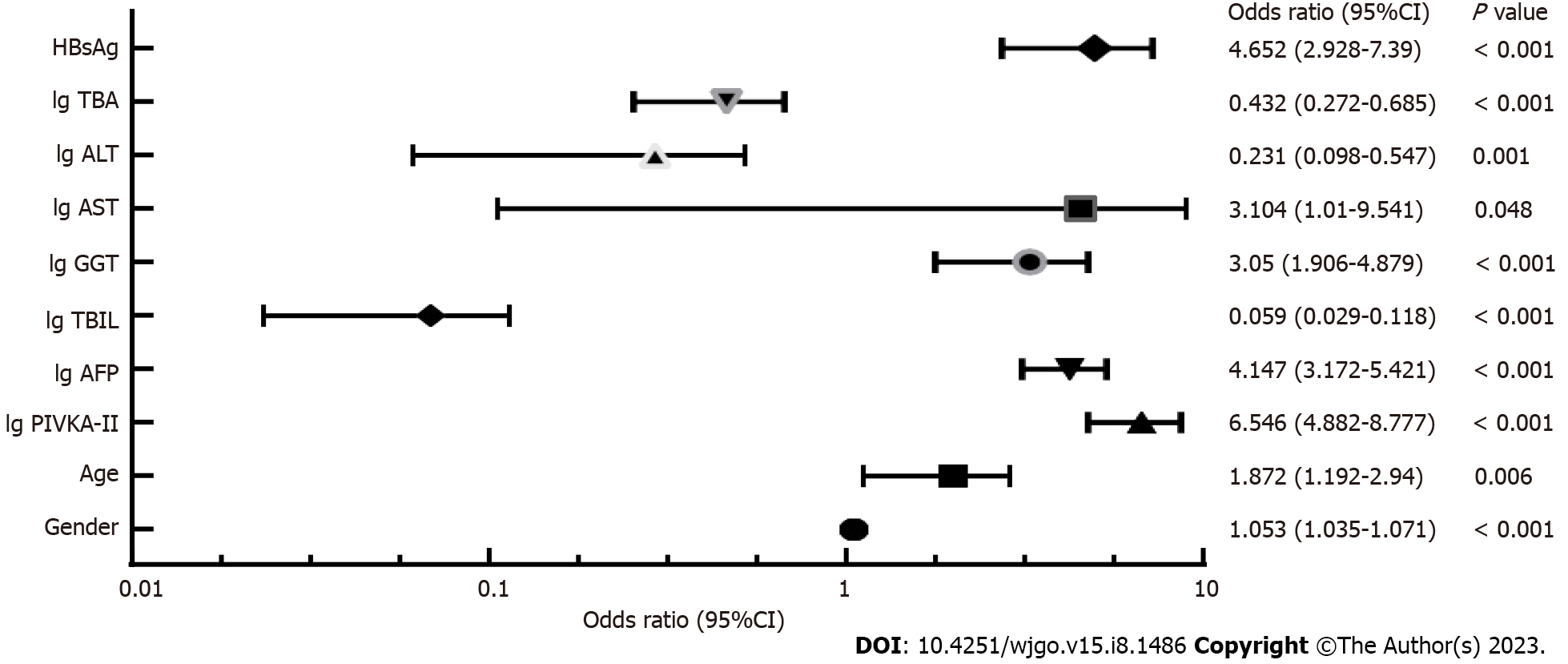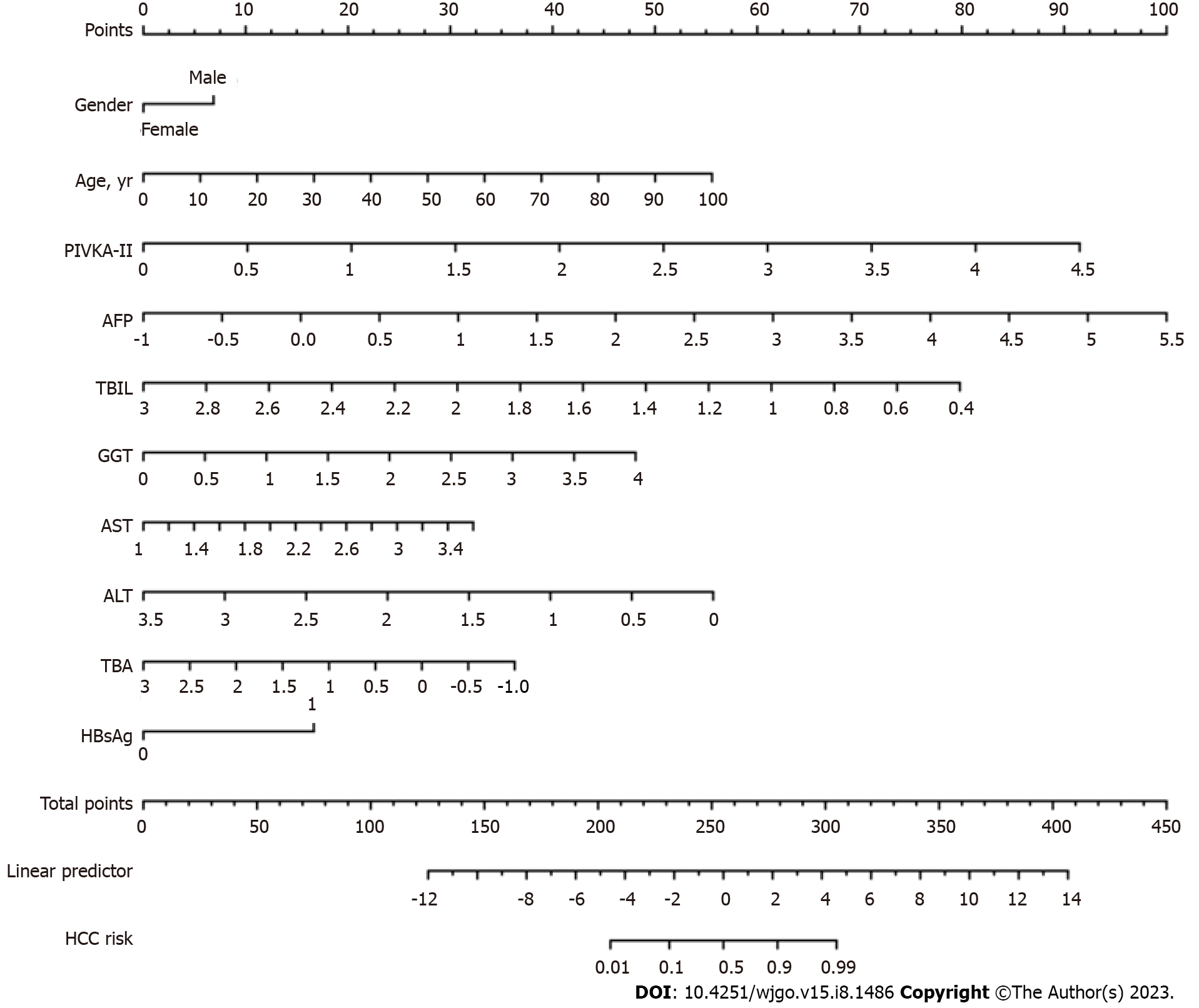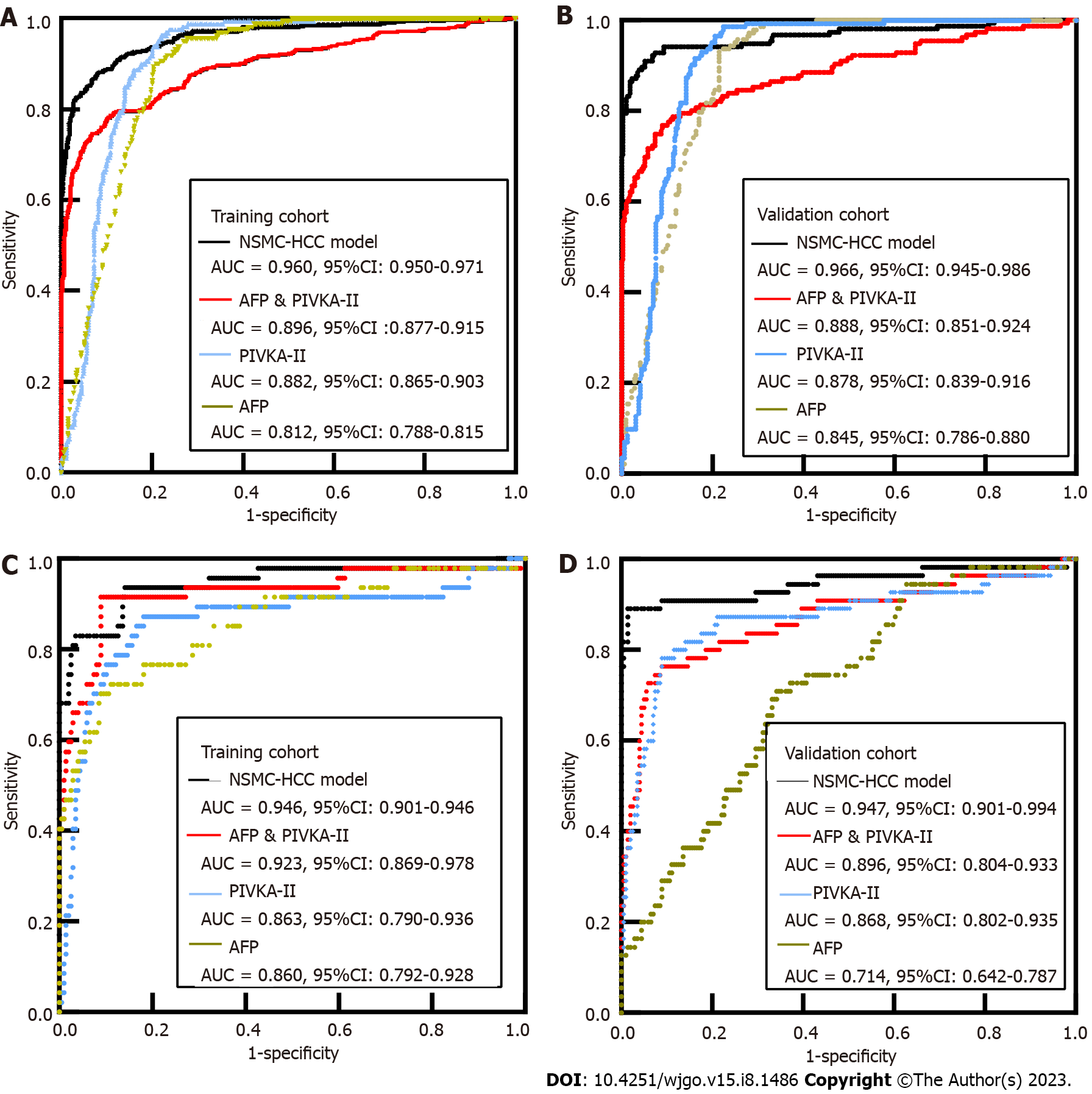Copyright
©The Author(s) 2023.
World J Gastrointest Oncol. Aug 15, 2023; 15(8): 1486-1496
Published online Aug 15, 2023. doi: 10.4251/wjgo.v15.i8.1486
Published online Aug 15, 2023. doi: 10.4251/wjgo.v15.i8.1486
Figure 1 Forest plot of variables in the diagnosis of hepatocellular carcinoma.
OR: Odd ratio; CI: Confidence interval; HBsAg: Hepatitis B surface antigen; TBA: Total bile acid; TBIL: Total bilirubin; GGT: Gamma-glutamyl transferase; ALT: Alanine aminotransferase; AST: Aspartate aminotransferase; AFP: Alpha-fetoprotein; PIVKA-II: Protein induced by vitamin K absence or antagonist-II.
Figure 2 Nomogram to predict the presence of hepatocellular carcinoma.
HBsAg: Hepatitis B surface antigen; TBA: Total bile acid; TBIL: Total bilirubin; GGT: Gamma-glutamyl transferase; ALT: Alanine aminotransferase; AST: Aspartate aminotransferase; AFP: Alpha-fetoprotein; PIVKA-II: Protein induced by vitamin K absence or antagonist-II; HCC: Hepatocellular carcinoma.
Figure 3 Diagnostic values of NSMC-hepatocellular carcinoma model, vitamin K absence or antagonist-II and alpha-fetoprotein in hepatocellular carcinoma patients and early-stage hepatocellular carcinoma patients.
A and B: Comparison of the area under the receiver operating characteristic curve between NSMC-hepatocellular carcinoma (HCC) model and alpha-fetoprotein (AFP), protein induced by vitamin K absence or antagonist-II (PIVKA-II) alone or both for HCC diagnosis in training cohort (A) and validation cohort (B); C and D: Compare the area under the operating characteristic curve of subjects using NSMC-HCC model and AFP, PIVKA-II alone or both for HCC diagnosis in the early-stage HCC in training cohort (C) and validation cohort (D). CI: Confidence interval; AFP: Alpha-fetoprotein; PIVKA-II: Protein induced by vitamin K absence or antagonist-II; HCC: Hepatocellular carcinoma; AUC: Area under receiver operating characteristic curve.
- Citation: Liu ZJ, Xu Y, Wang WX, Guo B, Zhang GY, Luo GC, Wang Q. Development and application of hepatocellular carcinoma risk prediction model based on clinical characteristics and liver related indexes. World J Gastrointest Oncol 2023; 15(8): 1486-1496
- URL: https://www.wjgnet.com/1948-5204/full/v15/i8/1486.htm
- DOI: https://dx.doi.org/10.4251/wjgo.v15.i8.1486











